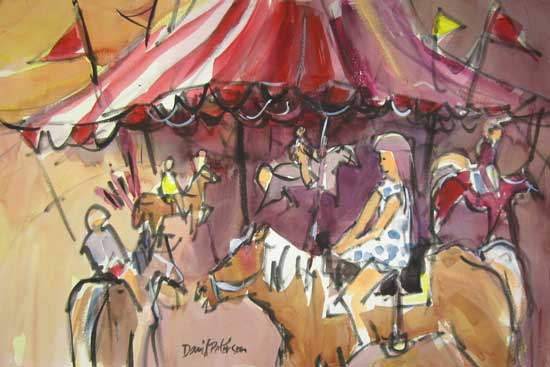 |
| Watercolor #947 by David Peterson |
A Good Place to be Lost
Nyanya took you to the fair. You loved the stuffed animals, especially the teddy bears and horses. After exhausting yourselves with games, you all took a pony ride. You got stuck with the pooping pony. Your sister was right behind it, and she laughed whenever it swished its tail out of the way to lay a big one. After dinner, your mom explained that the family was going back to Mexico. “It’s a good place to be lost,” she said.
Why did you move? Your mother had seen someone. Always, whenever your family moved, from barrio to barrio, city to city, country to country, it was because Nyanya had seen someone who might have ended up hurting the children she loved.
It might be hard to think about it. The time that came next will probably remain guarded in your memory banks forever, in some hidden, encrypted drive.
Sometimes, you might look around your classroom at all the faces. These kids have their own hardships, of course, but they can’t possibly know what your past like. How it was to be constantly on the move. To not have a roof over your head when you’re travelling. To sleep in sketchy hotels, or even out under the stars. To not have enough food and to pray to God to supply your next meal. To settle down and make friends with your neighbors only to get uprooted again because your mother was afraid of Something Bad.
Something Bad stalked your family the way darkness stalks light, always on your heels from town to town.
| "Living in Fear" by Philip Wartena Photography |
Nyanya had to stay on her toes. To eke out a living means to survive in the world through heavy labor, hard times, and the sweat of your brow. Nyanya spent her whole life and much of her children’s lives eking out a living.
You might have felt it sometimes, but you didn’t know all the details. And maybe that’s better. It’s enough to know that Mexico is a dangerous place. As dangerous as it is unique and beautiful.
But this is part of your history. It’s part of what makes you who you are today.
Here are some of the stories of your family’s life in Mexico. (See: An Average Day)
***




